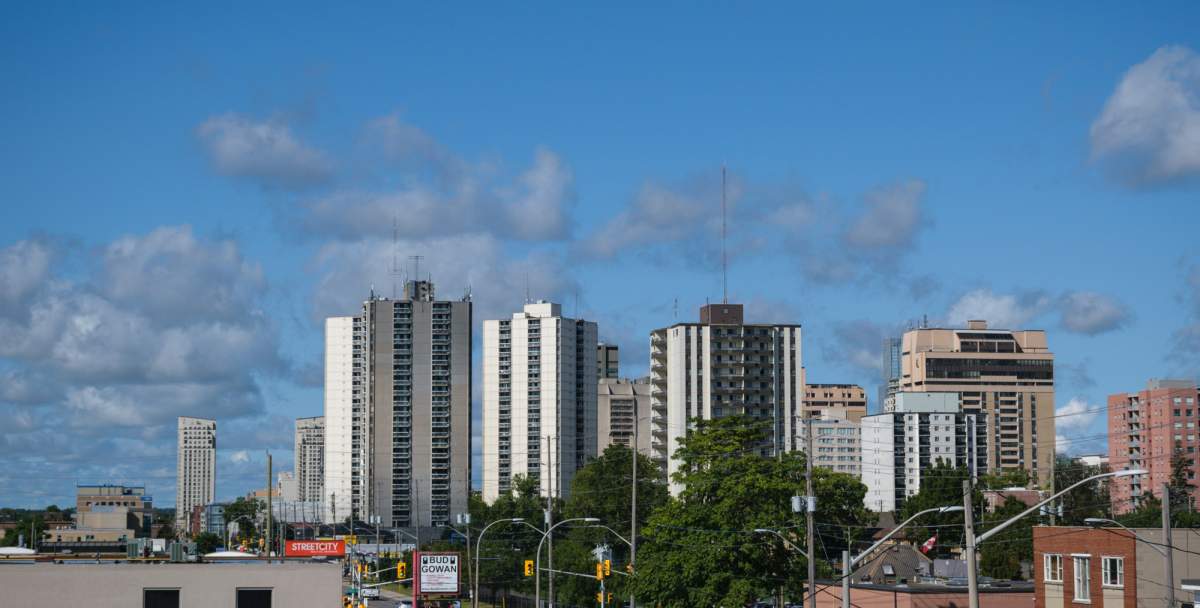The continued economic impacts of the novel coronavirus pandemic pushed the London and St. Thomas-area unemployment rate to a record high in May, according to Statistics Canada.

The unemployment rate rose to 11.7 per cent last month, eclipsing the previous high of 11 per cent set in August 2009 in nearly 20 years of comparable data going back to March 2001.
It comes after the region’s unemployment rate hit 8.9 per cent in April, rising from 5.8 per cent in March, the same month the novel coronavirus was declared a global pandemic.
Prior to the pandemic, the region’s unemployment rate sat at five per cent in January and 4.8 per cent in February.
Statistics Canada also reported the London-St. Thomas region shed around 11,000 jobs in May and saw its participation rate fall again to 58.8 per cent.
Some 16,300 jobs have been lost locally since March while the participation rate has fallen 2.8 percentage points in the same time period.
The local labour force also decreased by roughly 3,900 people in May, while some 7,200 more people claimed unemployment.
Since March, Statistics Canada says the local labour force has decreased by 12,200 people, and roughly 15,000 people have claimed unemployment.
Speaking during the Middlesex-London Health Unit’s daily COVID-19 briefing on Friday, Mayor Ed Holder said it will be a long road to recovery, describing the number of jobs lost during the pandemic as the “highest number of job losses we have seen in such a short period of time in London’s history.”

Get breaking National news
“We’re continuing to work closely with all sectors of our economy as part of the Mayor’s Economic Impact and Recovery Task Force,” Holder said. “These discussions are now totally focused on recovery.”
“Questions we ask: how to get people back to work quickly and safely. How do we provide them with necessary supports? How do we do all of that while guarding against a surge in COVID cases, which could send us all back to square one?”
Holder said measures implemented locally by the city to offset the pandemic’s impacts, including an anticipated multi-million-dollar budget hole, further reinforce the need for emergency assistance from senior levels of government.
Prime Minister Justin Trudeau announced Friday he has offered provinces and territories up to $14 billion in new federal transfers if they work with Ottawa on a “safe restart agreement” to help Canadians return to more normal living without bringing a massive spike in coronavirus cases.
Holder said the move was the federal government’s “clearest commitment yet” to work with the provinces to solve the municipal financial crisis. The Federation of Canadian Municipalities has estimated the financial need among municipalities to be between $10 to $15 billion nationally.
“Without emergency funding, we’re out of options,” Holder said.
“Enabling municipal debts won’t work… This is no time to cut front-line services. And shelving infrastructure projects undermines recovery everyone is counting on.
“So again, we’re looking on Ottawa and the province of Ontario to work together and get this done.”
The money, which would increase federal transfers to provinces by 17 per cent this year, was a good start, but not enough, said Ontario Premier Doug Ford.
“Fourteen billion dollars for all of Canada just won’t cut it,” Ford said, noting he was looking for $23 billion for Ontario alone.
Nationally, Statistics Canada reported a record-high unemployment rate for Canada as the economy added 289,600 jobs in May, with businesses reopening amid easing public health restrictions.
The unemployment rate rose to 13.7 per cent, topping the previous high of 13.1 per cent set in December 1982 in more than four decades of comparable data.
The increase in the unemployment rate came as more people started looking for work.

The increase in the number of jobs comes after three million jobs were lost over March and April, and about 2.5 million more had their hours slashed.
Provincially, losses continued in Ontario, although at a slower pace than in March and April. The provincial unemployment rate rose to 13.6 per cent in May, up from 11.3 per cent in April.
— With files from The Canadian Press









Comments